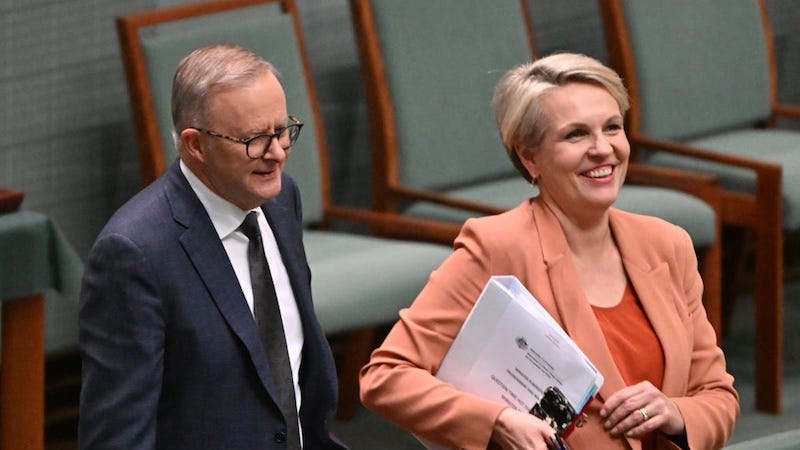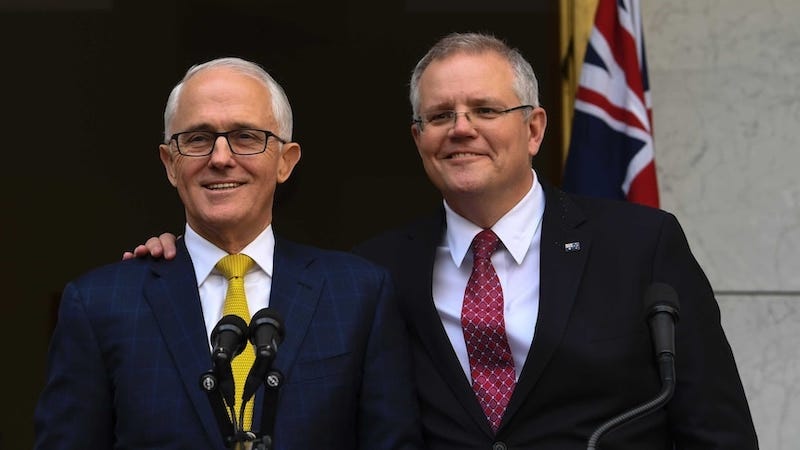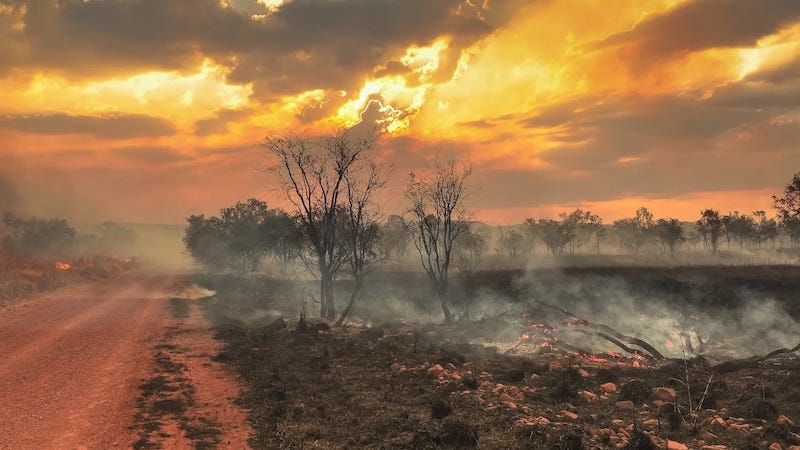The story behind the manufactured leadership speculation
Journalists and editors need to re-evaluate their priorities and begin asking the hard questions and follow real stories, not chase endless leadership fabrications.
The speculation surrounding a supposed rift between Prime Minister Anthony Albanese and Minister for the Environment Tanya Plibersek has been amplified by the conservative media, but the entire narrative has been built on a foundation of assumptions and misinterpretations rather than any evidence at all. The focus of this issue was the Prime Minister’s controversial decision to withdraw the Nature Positive legislation – a move that has been criticised for both its timing and its deference to the interests of the mining industry in Western Australia. While this decision sparked outrage among environmental advocates – and rightly so; it was a foolish political and practical decision by Albanese – it has also fueled baseless conjecture about a leadership contest within the Labor Party.
First of all, it’s important to see the context of the Nature Positive legislation to understand what this withdrawal means. The bill, designed to establish the Environmental Protection Agency and the Environmental Information Office, represented a landmark initiative aimed at enhancing Australia’s environmental governance. Its provisions had been negotiated with the Australian Greens, a rare agreement on critical policy between the Labor government and its progressive counterparts. Albanese’s abrupt intervention to pull the legislation, seemingly without consultation or adequate justification, raised questions not only about his leadership style but also about the undue influence of powerful industries over democratic processes.
The media’s framing of this decision as a tactic purely to undermine Plibersek and stifle her political ambitions is as cynical as it is unsubstantiated. While it is true that internal party dynamics and leadership aspirations do play a role in political decision-making, there is little evidence to suggest that Plibersek is actively positioning herself as a challenger, and Albanese’s motives are a combination of political pragmatism and external pressures rather than personal vendettas.
The Labor Party’s leadership structure also highlights the implausibility of a Plibersek-led challenge at this point. Under the party’s rules, a leadership spill requires the support of 75 per cent of Caucus members – a threshold that is difficult to meet, especially in a government that has been generally stable since May 2022 and is now preparing for a federal election.
What the media failed to examine are the real reasons behind the withdrawal of the Nature Positive legislation – significant lobbying efforts by the mining sector, particularly in Western Australia, where economic interests are deeply entrenched within political decision-making. By focusing on alleged personality conflicts and leadership speculation, journalists have avoided confronting the uncomfortable reality that corporate influence continues to undermine progressive environmental reforms in Australia, a narrative that serves both the mining industry and the media organisations aligned with its interests, creating a smokescreen that diverts public attention from substantive policy debates.
Ultimately, this episode is emblematic of a broader malaise in political journalism. The relentless 24-hour news cycle creates a demand for quick sensationalism, pushing journalists to fabricate conflicts where none exist. As American journalist Walter Cronkite once observed, “Australia; too many journalists and just not enough news”, an observation that is especially pertinent in an era where the focus on scandal and speculation often comes at the expense of meaningful analysis and accountability.
The Nature Positive controversy offers a clear case study in how vested interests and media dynamics shape public discourse. Rather than interrogating the role of the mining industry or examining the structural barriers to environmental reform, the media has chosen the easier path of personality-driven drama, which ignores the real story. The Labor leadership speculation is a classic media diversion and should be dismissed as such.
Framing Labor leadership as chaotic
The media’s push of leadership speculation in the Labor Party, versus the Liberal Party, is also as predictable as it is revealing. When Labor faces even a faint whisper of discontent or discussion – or if there is a disagreement about policy or legislation – it is immediately painted as a catastrophic leadership implosion, signaling the end of stability and the certainty of electoral defeat. However, when the Liberal Party engages in similar actions, it is always framed as a pragmatic and necessary adjustment, a rational response to shifting political realities rather than an existential crisis.
For example, the removal of Tony Abbott in 2015: the media largely framed his ousting by Malcolm Turnbull as an inevitable correction, a wise move to rejuvenate a government that was struggling in the polls. Similarly, when Turnbull himself was deposed in favour of Scott Morrison in 2018, the discourse revolved around the Liberal Party’s need to stabilise itself, rejuvenate and project unity.
When leadership questions are raised of Labor – whether real or imagined; and in most cases, they are imagined and fabricated – the narrative quickly devolves into a self-reinforcing cycle of doom, rather than as part of the rough-and-tumble of politics. Journalists and commentators project instability, pushing questions about leadership into the public discourse, even when no internal moves are being made. This then feeds the perception of weakness and division, creating the very instability the media purports to observe.
The current speculation about Albanese is a textbook case of this phenomenon. Despite the lack of evidence, the media is already crafting a storyline in which Albanese’s leadership is under siege. They have begun to float narratives suggesting that a vote for Albanese at the next election is a vote for someone else – be it Plibersek, Treasurer Jim Chalmers, or another potential challenger waiting in the wings. This narrative will undoubtedly persist until the next election, creating a backdrop of artificial tension and mistrust within the Labor government.
What makes this cycle particularly insidious is the way the media uses speculative questions to manufacture controversy. When Chalmers was recently asked whether he would seek the leadership, his unequivocal and forceful denial did little to dampen the speculation. Instead, his response was twisted into a potential sign of future ambition. The subtext becomes the story, and even the absence of evidence is spun as evidence itself.
The questions made of Albanese’s future further illustrate the media’s ability to shape the narrative to fit a predetermined storyline. The fact that Labor MPs are acutely aware of the electoral poison of leadership changes within the Labor Party – having suffered the consequences firsthand in 2010 and 2013 – makes the media’s relentless pursuit of this angle even more disingenuous. Labor has learned from its mistakes, but the media has not. This dynamic is not just a matter of journalistic laziness; it reflects deeper biases within Australia’s political and media landscape.
A crisis of imagination: How Australia’s media prioritises conservative narratives
This focus on personality-driven drama, rather than the policy implications of the decision to pull critical environmental legislation – which is where the real story is – illustrates the misplaced priorities of Australian journalism. The Nature Positive bill represented a meaningful opportunity to enhance environmental protections, establish key institutions, and demonstrate leadership on ecological sustainability.
Its sudden withdrawal is a story of political priorities, the influence of the mining sector, and the challenges of balancing economic and environmental imperatives. Yet, these angles remain underexplored because they require the kind of investigative depth and nuance that much of the mainstream media lacks – or avoids – in favour of easier, more provocative headlines. Speculation about leadership – which is pure speculation – is a far easier story to create, with virtually no research, when compared to exploring the influence of the mining industry in politics, and failures in environmental policy.
There are exceptions to this trend, of course, particularly in smaller outlets and among a handful of enterprising journalists in larger organisations. These individuals demonstrate what Australian political journalism could be if it were driven by curiosity, skepticism, and a commitment to holding power to account. However, they are vastly outnumbered by conservative commentators and compromised journalists who regurgitate the same tired analysis, constrained by editorial agendas that prioritise clicks, ratings, and the agendas of their proprietors, over substance. The result is a media landscape that stifles critical thinking and reinforces political inertia.
As Australia moves closer to the next federal election, the implications of this dynamic are profound. The media’s refusal to engage with the important issues, its reliance on manufactured controversies, and its tendency to privilege conservative narratives over progressive ones, all serve to distort public discourse. The withdrawal of the Nature Positive legislation and the subsequent media circus offer a case study in how these dynamics play out, highlighting the urgent need for a more thoughtful, independent, and courageous press.
If the media continues down this path – and it more than likely will – the Australian public will be left with a distorted understanding of its political landscape, unable to engage with the real challenges facing the nation. For the sake of democracy, accountability, and progress, it’s important that journalists and editors re-evaluate their priorities and begin asking the hard questions – not just of political leaders, but of themselves. Only then can Australia hope to break free from the cycle of mediocrity and manipulation that has come to define its mainstream media.










